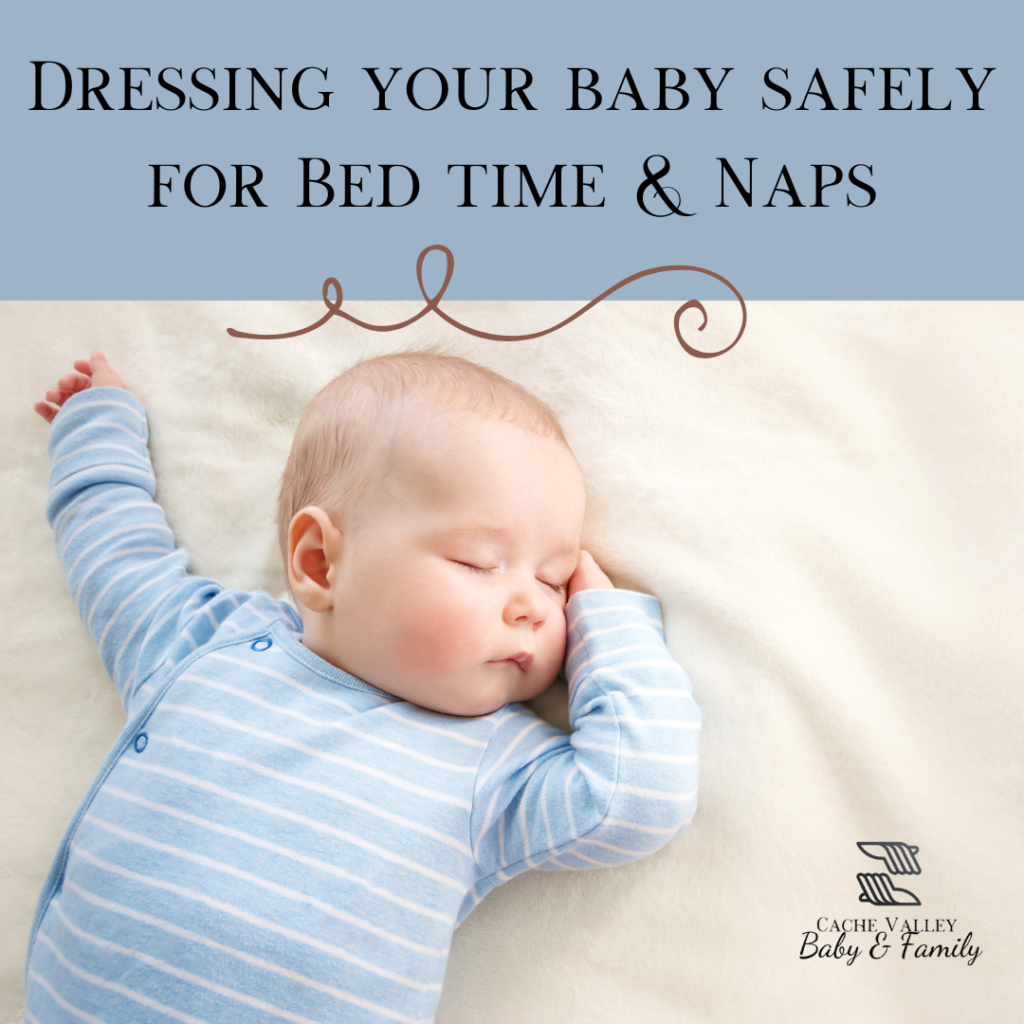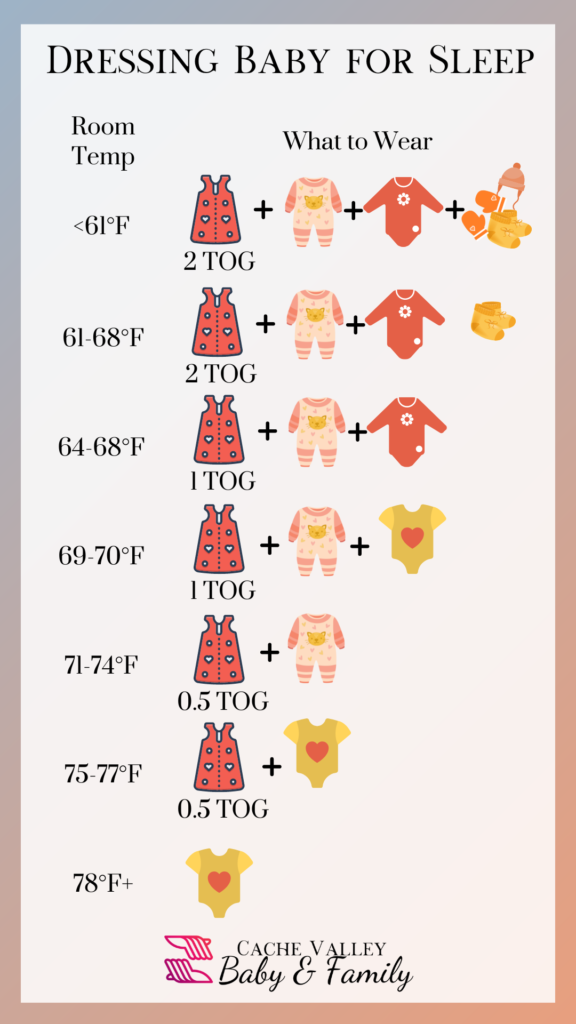
This is a question I hear a lot! In all different forms:
“We keep our house on the chilly side. How do I know if my baby too cold at night?”
“We don’t have AC and the room gets really warm during the summer. How many layers of clothes should my baby wear?”
“We’re following safe sleep guidelines, but we aren’t sure about how to dress our baby.”
This is an incredibly valid concern. After all, overheating while asleep has been linked with SIDS, and being too cold can lead to sluggishness and unresponsiveness.
Well there’s a super useful tool to help you determine how much your baby should wear at night! It’s called TOG, and you can find it on most commercially available baby clothes.
What is TOG?
TOG stands for thermal overall grade. Basically, it measures the warmth and insulation provided by the piece of clothing. TOG rating is standardized across infant sleep items. It helps parents determine how much their baby should be wearing to sleep, which is great news for parent! Many larger companies do provide it, though not every piece of clothing has a rating, and it’s not required by the US government.
A low TOG rating (the low end is 0.25-0.5) means that it doesn’t provide much warmth. But if you build up low ratings, you reach a higher one – and some individual pieces of clothing can be as high as 3.5.
Why is TOG useful?
You probably have noticed that the thickness of your shirt doesn’t necessarily determine how warm it will keep you. Things like the material and the weave also play a large role! So clothing with a TOG rating helps you to understand how that specific fabric acts, which helps you to dress your baby accordingly – after all, your baby can’t tell you how warm or cold they are.
Using TOG
Using TOG rating is easy, and you can download this photo for handy reference!

Other safe sleep tips
- Hands and feet are not a good measure of how warm or cold a baby is – it’s their core temperature that matters.
- Don’t put anything else in your baby’s crib – no blankets, hats, free mittens, socks, or toys. Use outfits with feet and hand coverings attached if your baby gets cold hands and feet. The exception to this is a pacifier (or as many as you’d like to leave!) if you use them.
- Always lay your baby to sleep on their back (even if they can roll on their own), but any position they get themselves into is generally considered safe.
- Make sure your baby is sleeping on a flat, firm surface – or in someone’s arms.

About the Author
Hi! I’m Liza, the owner and founder of Cache Valley Baby & Family. I do a lot of different things, including postpartum doula support, fertility awareness instruction (with a focus on conception), infant feeding support, and perinatal class instruction. I have a passion for working with families and women.
In my perinatal classes and postpartum support, I’ve worked with families from all walks of life, supporting them through their unique journeys. I particularly enjoy watching people become more confident in their own abilities as they go through my classes.
I love teaching fertility awareness. Because of the rest of my services, my focus is mainly on charting for conception, but I’m also experienced and happy to teach those charting to avoid pregnancy or to track their health. I have experience helping people chart with PCOS, thyroid disease, and more. I trained as an instructor through NFPTA.
All of my classes can be taken online from anywhere around the world, and I also hold local classes in Cache Valley, Utah. If you’d like to work with me, go ahead and reach out!
Leave a Reply